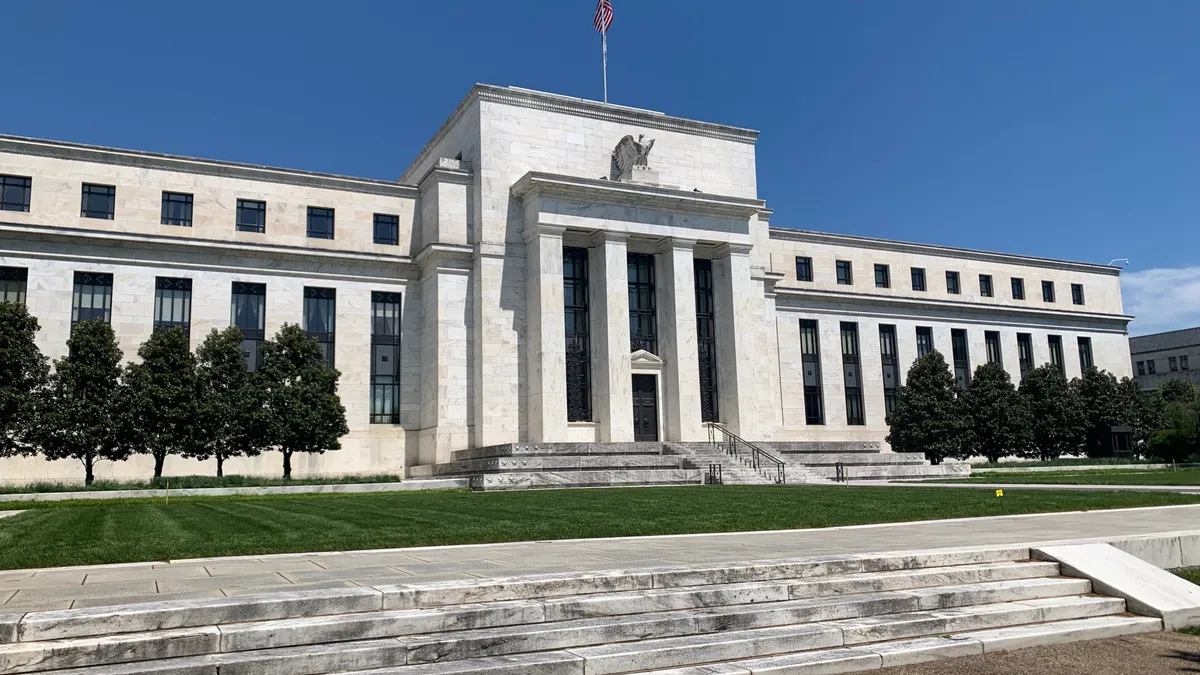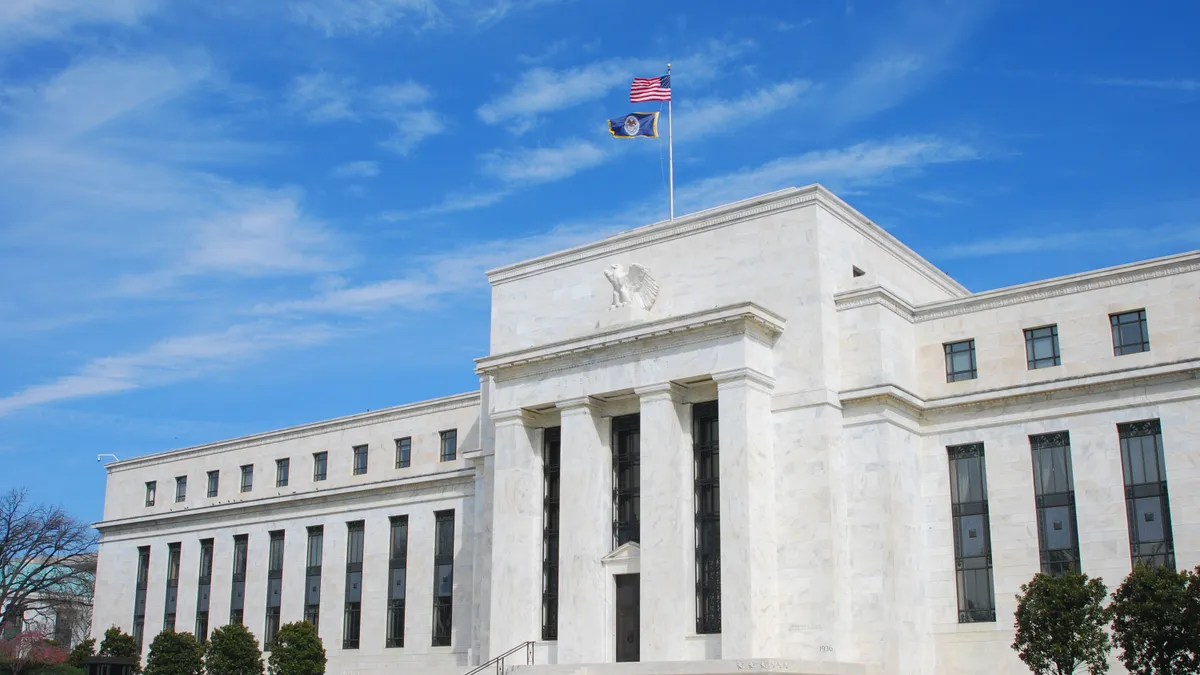Dive Brief:
- The Boston Fed and the Massachusetts Institute of Technology released a white paper Thursday detailing the findings of their first phase of research that could support a potential central bank digital currency (CBDC).
- Researchers built a core processing engine and explored it in two architectures with the aim of processing 100,000 transactions per second and settling them in less than five seconds. Both code bases exceeded that goal, with one able to handle 1.7 million transactions per second and the "vast majority" of transactions settled in less than two seconds, researchers said.
- The project’s second phase, to be performed over the coming years, may explore cybersecurity concerns such as secure issuance and redemption, how to balance user privacy with the need for transparency, how to maintain open access while protecting against denial-of-service attacks, as well as offline payments, programmability and auditability, researchers said.
Dive Insight:
In addition to the white paper, researchers released the code for the project on GitHub under an open-source license that would allow outside developers to inspect, modify and enhance it.
"We hope to collaborate and explore these challenges with other technical contributors from a variety of backgrounds in the open source repository" during Phase 2, the white paper’s authors wrote.
"We believe that this is the best way to ensure that OpenCBDC is vetted by a large number of people — all of whom will bring unique knowledge, skills, and ideas for improvement," Neha Narula, director of MIT’s Digital Currency Initiative, told reporters on a call Thursday, according to Bloomberg.
The Boston Fed-MIT research, which launched in August 2020, marks the second publication in the past two weeks devoted to the central bank's exploration of a possible CBDC. The Federal Reserve Board in late January issued a 40-page draft paper laying out the pros and cons of a digital dollar. It made no policy recommendations and is designed to solicit comments from the public.
Fed Chair Jerome Powell also made clear the Fed wouldn't move forward with a CBDC unless it has support from lawmakers and the White House.
The January paper indicated the Fed would likely lean on intermediaries such as commercial banks or other regulated providers to offer accounts and facilitate payments using the hypothetical token.
Boston Fed and MIT researchers, however, found they could reach their goals without looping in intermediaries — and that distributed ledger technology "has downsides" even when run under the control of a single actor.
"It creates performance bottlenecks, and requires the central transaction processor to maintain transaction history, which one of our designs does not, resulting in significantly improved transaction throughout scalability properties," researchers wrote.
But the code the Boston Fed and MIT developed can be tailored to a more concrete framework later.
"Any system that might be used in the future, I think, is going to depend a lot on what policymakers decide," Narula said, according to Reuters.
Jim Cunha, the Boston Fed’s interim chief operating officer, said he expects the technological research into a possible CBDC will continue for at least another couple of years.
"There’s a lot of work to do here," he said, according to Bloomberg.
"It is critical to understand how emerging technologies could support a CBDC and what challenges remain," he said in a press release Thursday. "This collaboration between MIT and our technologists has created a scalable CBDC research model that allows us to learn more about these technologies and the choices that should be considered when designing a CBDC."
Though the Fed has been noncommittal on a digital dollar, Bank of America strategists have said they think one is inevitable, predicting it could be issued in the latter half of this decade, Bloomberg reported.














